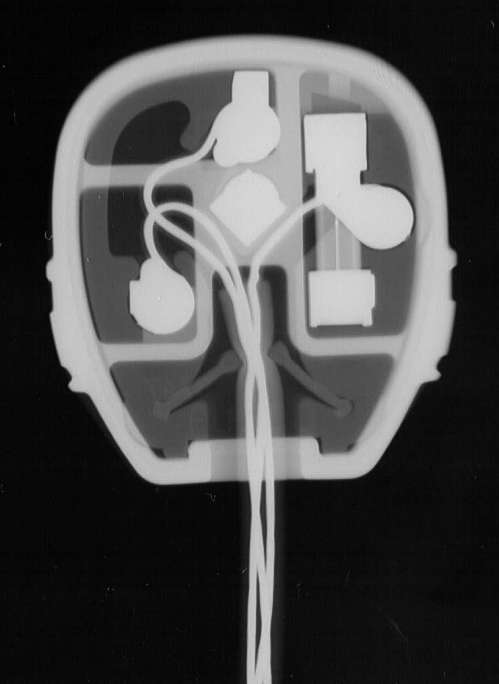So basically you don't have a clue what you're talking about.
Maybe not, but everywhere that stocks and sells 'plugtops' seem to know what I'm talking about. And they all call them plugs.
So basically you don't have a clue what you're talking about.
That's an interesting theory, which I've never heard before - but it's far from impossible.The only possible theory I can come up with at the moment is that the very old wooden plugs of 100 years or so were shaped like a top, or a spinning top. They were round, and a had a knob as a handle, so very much like a spinning top or top.
No - as I said, if it's 'female' and 'static'/'fixed', that's precisely what I would intuitively call a 'socket'.So on that basis, do I take it you would describe these as an 'outlet connector' and not a socket?
Again, no. You seem to be scraping the barrel in attempts to unearth inconsistencies in my intuitive use of terminology - which is not too difficulties because, like most people, I'm pretty inconsistent in this respect! I would call that a "trailing socket", and I would call the 'trailing thing' I plugged into it "a plug", just as I would if the socket were static/fixed.Further to your statement, would a male connector coupled with something non static such as this .... be called comething other than a plug?
No I'm most certainly not scraping the barrel, I'm merely pointing out the rather stupid and definitely illogical and at times confusing terms applied to some devices.No - as I said, if it's 'female' and 'static'/'fixed', that's precisely what I would intuitively call a 'socket'.
Again, no. You seem to be scraping the barrel in attempts to unearth inconsistencies in my intuitive use of terminology - which is not too difficulties because, like most people, I'm pretty inconsistent in this respect! I would call that a "trailing socket", and I would call the 'trailing thing' I plugged into it "a plug", just as I would if the socket were static/fixed.
In fact, what you have illustrated is just one particular example of the countless 'in-line' connectors (with both components 'trailing') which we see in so many contexts ('electrics', auto-electrics, electronics, AV, IT etc. etc.), in which both male and female connectors are 'trailing' - and it seems that conventions/traditions as regards their terminology are pretty inconsistent.
Kind Regards, John

This is getting a tad racy.......was it not established...in...anatomy...that a 'socket' was a 'female' receptacle into which something 'male' (often called a 'plug') was inserted?
Fair enough - in which case, as I thought I implied, you are essentially preaching to the converted. Amidst the potential confusion, I attempt to use terminology which does not offend my sense of logic too much but which, at the same time, correctly conveys the information I'm trying to communicate - which is not always easy!No I'm most certainly not scraping the barrel, I'm merely pointing out the rather stupid and definitely illogical and at times confusing terms applied to some devices.
I think I stuck pretty rigidly to that idea for a good few years and, if one adopts that approach, then the concept of 'connector gender' then obviously becomes redundant - since plugs are then always male and sockets always female. However ...To my mind something with pins is a plug and something with 'oles is a socket, regardless of whether it's on the end of a cable or screwed to a wall/panel.
One problem arises from the verb "to plug in", which tends to implicitly suggest that it's always a 'plug' which is 'on the end of a cable' (regardless of gender). Would you really (in the appropriate situation) ask someone to "plug the socket into the plug", or something like that (in the case of the 'static' component being 'male')?I see absolutely no reason to call a wall mounted plug anything other than a plug ...
You were slower than I had expectedThis is getting a tad racy.......


https://www.flameport.com/electric_museum/plugs_BS372_round_pin/wooden_side_entry_plug.cs4I call them plug tops. That's what they were and are frequently called in the trade.
Why it's called a plug top, I don't know - but it's an old term.
The only possible theory I can come up with at the moment is that the very old wooden plugs of 100 years or so were shaped like a top, or a spinning top. They were round, and a had a knob as a handle, so very much like a spinning top or top.
Possibly a name that never went away.
I feel no such suggestion as to which part is 'on the flex', in fact I can think of examples where a fixed plug is mated with a fixed socket without any flexible part.One problem arises from the verb "to plug in", which tends to implicitly suggest that it's always a 'plug' which is 'on the end of a cable' (regardless of gender). Would you really (in the appropriate situation) ask someone to "plug the socket into the plug", or something like that (in the case of the 'static' component being 'male')?
Kind Regards, John

Random I know, but an X-ray of an MK plugtop



And they had to be low enough to reach to plug the iron into, always used the light BA22d connector for iron it keeps the cable out of the way.Their childhood homes had straightforward wiring arrangements - electric lights in the ceiling of one or two rooms.
If you need to find a tradesperson to get your job done, please try our local search below, or if you are doing it yourself you can find suppliers local to you.
Select the supplier or trade you require, enter your location to begin your search.
Are you a trade or supplier? You can create your listing free at DIYnot Local
